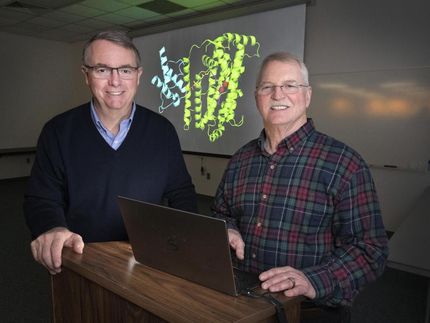O2 stable hydrogenases for applications
Advertisement
A team of researchers from the Max Planck Institute for Chemical Energy Conversion and the MPI für Kohlenforschung in Mülheim an der Ruhr have succeeded in optimizing naturally occurring catalysts (hydrogenases) for application.
Hydrogen as an energy vector
Hydrogen gas (H2) has been proposed as an ideal energy vector. It can be produced from water, ideally using renewable energy sources and using an efficient catalyst to split water into H2 and oxygen (O2). The H2 produced can then be stored as a fuel and consumed in a fuel cell to produce electricity on demand generating harmless water as a waste product. This technology is already available and can reach high efficiencies. Unfortunately, the catalysts required are based on rare and expensive metals like platinum.
Bio-hydrogen
Nature also employs H2 as a fuel, but instead of using precious metals, living organisms utilize enzymes as catalysts, and the catalyst of choice for H2 cycling are the hydrogenases. The active center of these enzymes contains earth-abundant metals like nickel and/or iron and can operate as efficiently as platinum. However, hydrogenases are very sensitive to oxygen and cannot be handled under air, complicating manipulation of them and therefore limiting their use in technological applications.
Producing “easy-to-handle” hydrogenases
Very recently, a team from the Mülheim-based Max Planck Institutes (Mülheim Chemistry Campus) have discovered a way to protect these sensitive enzymes from oxygen damage. Treating the purified hydrogenase with strong oxidizing agents in the presence of sulfide converted it to an oxygen stable form. Spectroscopic and electrochemical methods were used to characterize the oxygen-stable state obtained. The oxygen stable enzyme can then be stored and handled under air making it easy to employ in fuel cells or water splitting devices. This research provides a step forward towards the use of these enzymes in technological applications as well as in understanding the mechanism of inactivation by oxygen. It also provides clues for protecting synthetic molecular catalysts designed for hydrogen conversion and production.
Original publication
Other news from the department science

Get the chemical industry in your inbox
By submitting this form you agree that LUMITOS AG will send you the newsletter(s) selected above by email. Your data will not be passed on to third parties. Your data will be stored and processed in accordance with our data protection regulations. LUMITOS may contact you by email for the purpose of advertising or market and opinion surveys. You can revoke your consent at any time without giving reasons to LUMITOS AG, Ernst-Augustin-Str. 2, 12489 Berlin, Germany or by e-mail at revoke@lumitos.com with effect for the future. In addition, each email contains a link to unsubscribe from the corresponding newsletter.































































